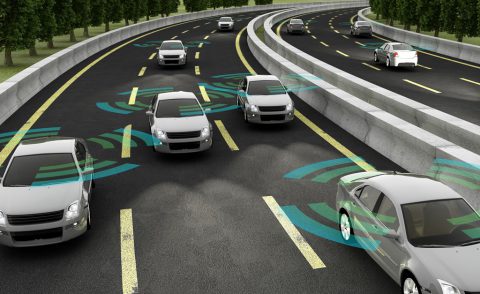As the connected car becomes more and more mainstream, future success continues to depend, in part, on the durability of the semiconductors and chips that power the connectivity. The industry has reaffirmed what we have already been seeing in our customers’ requests; specifically, that there are different requirements for chips depending on where they are located in the car. We deal with a lot of the new auto-radar devices that available today and it seems clear that they are all going to be tested to either grade 0 or grade 1 of the AEC-Q100 standard. It’s also clear that this particular niche of the greater auto IC wave is going to be more than a small ripple.
Early expectations were that adaptation of this technology would first be driven by high-end manufacturers and then eventually by government regulations, much in the same way airbags became ubiquitous auto safety features in the 1980s. The first part of that story was certainly true with BMW, Mercedes Benz and Lincoln town cars leading the way, but then even faster than governments could digest this new wave of safety features, the insurance companies saw the benefit and started offering significant discounts for cars with these features.
Grade 0 (zero) temperature requirements up to 150°C were one of the main drivers for us to start development of higher temperature capability on the Pyramid® probe card. The radar chips have other special test challenges beyond AEC-Q100. They need to be tested at millimeter wave speeds between 77 GHz – 81 GHz, which is not trivial or cheap. The chipmakers are pushing, as they always do, toward higher parallelism to keep costs down but dealing with crosstalk at those frequencies can be difficult. Today we are working with several customers who want to optimize the ability to meet these requirements along with the lowest possible cost.
Customers appreciate when the probe card suppliers understand what validation requirements they are under for safety devices like these radar chips. If we can anticipate their pain, we are that much more aligned in finding a solution. One recently stated, “If the car in front of you suddenly braked hard, how many centimeters of accuracy would you like your radar to have before it started to slow you down?” Understanding our customers’ requirements led us to point to a very direct line from the quality of test that we provide to the potential safety of our friends and family.
The industry belief that automotive IC applications are going to be a big driver of future growth seems accurate, and we appreciate an article like this one for helping everyone understand what the requirements are going to be. With the help of radar chips tires that wirelessly communicate their inflation level to the onboard processor, and eventually even self-driving cars are most certainly coming. The better the test community understands the requirements, the more we are going to enable that future. Here at FormFactor, we are certainly investing in exactly that, and we see a safer and more efficient future with these innovations.
